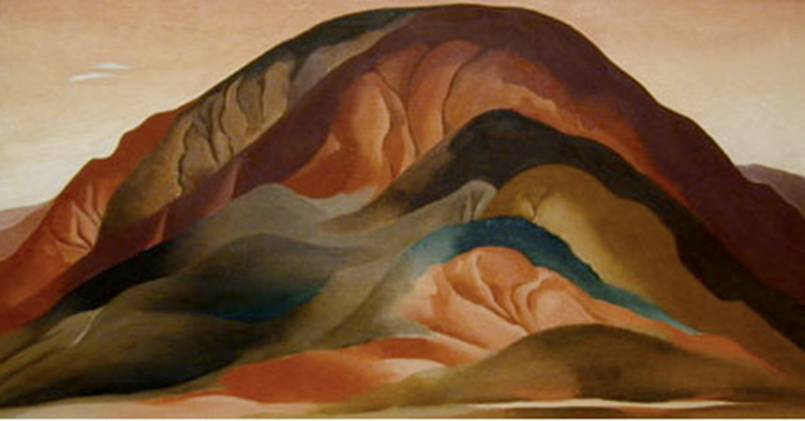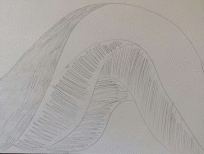Introduction
Artists are the people whose relentless work has inspired others through centuries. No matter what genre one works in, it is hardly possible for a work of art to leave the viewer without any reaction. Be it positive or negative, there is always some feedback from the one contemplating art. Personally, my favorites are sculpture and painting since they are the closes to reality. I enjoy watching landscapes painted by renowned painters and not very famous ones all the same. I believe that every artist has the right to express him- or herself, and the ways they choose to do so are fascinating.
Inspiration Piece
Georgia O’Keeffe painted “Rust red hills” in 1930, and this work is one of many she created during her stay in New Mexico in the end of the 1920s – the beginning of the 1930s (Hertzlieb, n.d.). O’Keeffe confessed that she was so overwhelmed with the picturesque scenery of New Mexico that she decided to buy a house there by the end of the 1940s (Hertzlieb, n.d.). The grandeur of natural forms was one of the greatest passions of the artist. O’Keeffe received full support and encouragement from her husband, Alfred Stieglitz, who was a famous photographer. Stieglitz motivated his wife to use innovative techniques without being afraid of anyone’s lack of acceptance or understanding (Hertzlieb, n.d.). That was one of the core reasons why O’Keeffe felt free to express her emotions on canvas freely and openly. Although Georgia went on the 1929 journey to New Mexico alone, she felt her husband’s encouragement in the distance and followed his advice while painting “Rust red hills.” The painting reflects the artist’s view on nature expressed via her unique stylization manner.

My Art Piece
Inspired by O’Keeffe’s work, I created the one called “Inside the snail’s house” (Figure 2). O’Keeffe’s painting made me think of the childish imagination about what is inside the snail’s shell. As a child, I used to think there were whole rooms in snails’ shells where they could sleep, eat, and even host little parties. The inspiration piece brought back childhood memories, and I drew something close to it in terms of shape.

Connection
The thematic connection between the two pieces is in their shapes. However, this is the only similarity between them since my work is much simpler. I did not utilize any colors or shades, which makes my piece look humble and not as impressive as the original. I believe that the medium affects the viewers’ experiences to a great extent. Personally, I am much more fond of paintings than drawings. However, unfortunately, I do not possess the talent of painting.
The formal elements of design in the two pieces are quite different, the most vivid similarity being the line. In both images, lines are irregular and curved, which creates a sense of movement. It is curious because the hills do not move, but still, that is the feeling that emerges in my mind when I look at them. O’Keeffe’s image is two-dimensional in the form, whereas mine is one-dimensional. O’Keeffe employed tones and textures to make her painting look alive. Finally, the artist utilized a variety of colors and shades when working on her painting, whereas I only used a pencil. Meanwhile, the composition in the two pieces is somewhat similar since I tried to copy the visual ordering f O’Keeffe’s work.
References
Hertzlieb, G. (n.d.). Georgia O’Keeffe: Rust red hills. Valparaiso Poetry Review: Contemporary Poetry and Poetics. Web.
O’Keeffe, G. (1930). Rust red hills [painting]. Web.